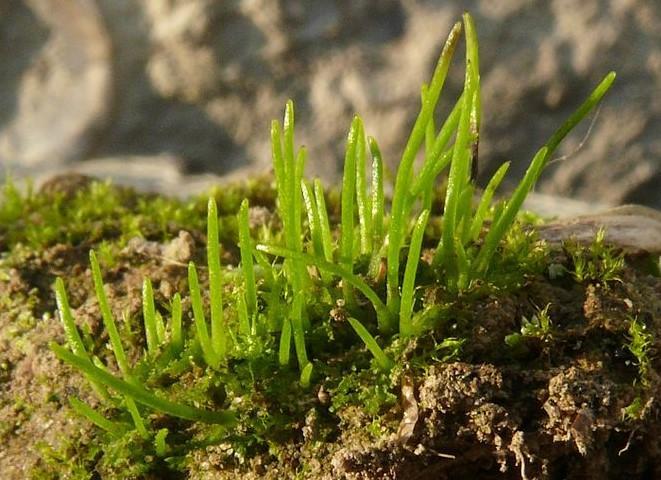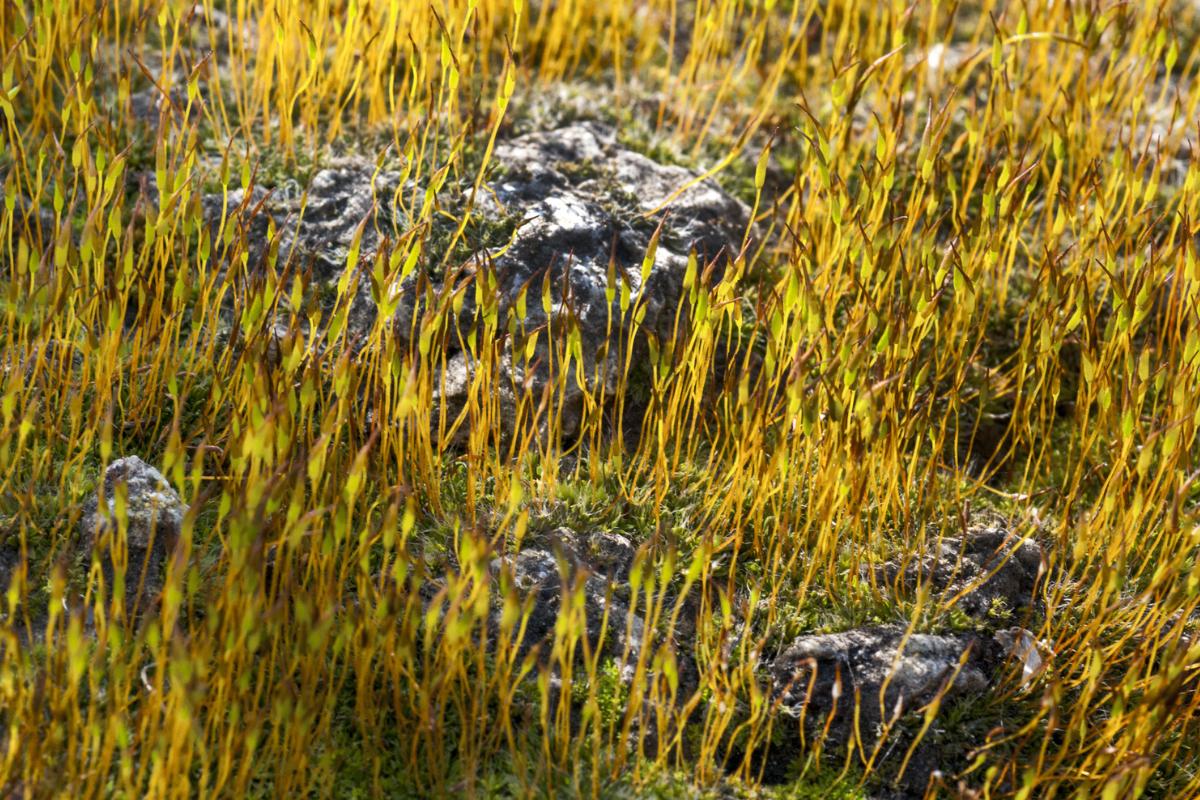What Are Hornwort Plants? - Definition and Characteristics


Hornworts are a group of non-vascular land plants which are poorly understood, despite growing in various habitats across the world. There is some debate over their scientific categorization, but there are certain characteristics of hornworts which all species have. These characteristics relate to their physical formations, but also how they grow and reproduce. As non-vascular plants, they do not have roots. This allows them to grow on surfaces many other plants cannot, but it does mean they cannot grow to be very tall.
At thedailyECO, we explain more by answering in detail what are hornwort plants? To do so, we look at a definition of these non-vascular bryophytic plants and find out what characteristics make a plant a hornwort.
What are hornworts?
As with all land plants, hornworts are part of the clade Embryophyta. This includes all terrestrial plants and they both make up the greatest number of plant species and have the greatest diversity. Specifically, hornworts are plants found in the taxonomic division known as Anthocerotophyta. For this reason, they are sometimes known as anthocerotophytes, although the use of hornworts is much more common.
Hornworts are distinguished by their flattened shape which is due to vegetative tissue known as the thallus. These thalli grow in ribbon-like structures which are usually between 0.5 to 2 inches in diameter. Although these thalli are small, the plant itself can grow to cover relatively large areas.
Despite being wide, these plants do not grow very tall. Hornwort plants may look larger than they are since they grow in clumps and can cover large areas, similar to other bryophytes such as mosses. When the plants are in the sporophyte stage, they grow stomata which appear as individual sprouts which grow up from the sporangium and release spores from their tips[1]. Hornworts are the first extant land plants known to have grown stomata[2].
Although hornworts can grow worldwide, they generally prefer very humid environments. They also thrive in shady areas, meaning they particularly like forests in tropical climates. While there are many different types of hornwort species which have been published, some researchers believe many of these are the same species listed differently. For this reason, there is anywhere between 100 to 300 hornwort species.
Hornworts differ from other bryophytes such as mosses and liverworts due to their cellular structure. Their plant cells have a single chloroplast per cell, the opposite of the other divisions within non-vascular plants. The latter groups have several chloroplasts. In the same way, hornworts also have unicellular rhizoids. These are the hair-like filaments which perform a structural function to keep the plant fixed to a given surface since they don't have roots.
Learn more about the preferred habitats of hornwort plants by looking at our guide to different jungle ecosystems.

Are hornworts bryophytes?
There has been much discussion over what plants are considered to be bryophytes. Mosses are flowerless non-vascular plants of the division Bryophyta. Some claim a parent group exists which includes hornworts and the other non-vascular plant known as liverworts (from the division Marchantiophyta). Some claim all of these plants should be categorized in the parent group known as bryophytes.
This discussion centers on whether they are paraphyletic or monophyletic. Paraphyletic plants are those grouped together with the last most common ancestor with most of its descendants, whereas monophyletic plants include the common ancestor with all its descendants.
Different reports have argued between both descriptions of hornworts. However, the most recent study and general scientific consensus is that hornworts are monophyletic[3]. This means they can be all be considered types of bryophyte plants. Their counterpart is the group known as tracheophytes which are vascular plants.
Bryophytes are also categorized in a larger group of both vascular and non-vascular plants known as cryptogams. Learn more with our guide to cryptogamic plants.
Characteristics of hornwort plants
Now we know more about what is a hornwort, we can look into greater detail about their characteristics. The main characteristics of hornworts include:
- They have a dorsiventrally flattened thallus that usually forms rosettes. The thalli of hornworts are composed of thin-walled cells, which are attached to the substratum by smooth rhizoids.
- It is common to see colonies of algae on the thallus, forming a symbiosis of hornworts. Learn more about these relationships in our explanation of symbiosis in biology.
- Hornwort habitat is located in humid and shady environments, typical of subtropical and tropical regions. They can be found anywhere from mountainous areas to riverbanks, although they can adapt to hot climates, but they can't stand frost.
- The reproduction of hornworts can be either sexual or asexual. In the case of sexual reproduction, spores are formed by meiosis from haploid cells. These develop inside the capsule until they mature and are released. Wind, rain and other factors result in their dispersal until they are anchored within a particular substrate. It is the same type of reproduction used by horsetails and clubmosses. Asexual reproduction in hornworts occurs through mitosis detaching a part of the thallus to give rise to a new individual identical to the parent.
Learn more about asexual reproduction in plants with our article on sporulation in biology.

Examples of hornworts
Although there are many different types of hornwort plant species, they are not as well documented as many other plants. This belies a general focus in botany on vascular plants, of which there is a much greater diversity. Still, we can look at some of the most prime examples of hornworts:
Anthoceros sp.
Within the Anthocerotaceae family we find more than 120 species already identified. One of the most populous genera is Anthoceros, individual species of which are characterized by the shape that the sporangium takes and by the dark color of its spores. This genus is depicted in the photo below.
Folioceros sp.
Another of the genera of non-vascular plants belonging to the hornworts with more than 40 identified species. Hornworms of this type are located mainly on the Asian continent. In addition, the gametophytic thallus presents small yellowish-green ramifications that reach a maximum of 3 cm in length.
Nothoceros sp.
A genus of hornworts belonging to the family Dendrocerotaceae native to eastern North America, South America, and New Zealand. Of the more than 16 cataloged species, only half are officially recognized.

Importance of hornbones
They perform an important ecological function in the forests and ecosystems in which they live. These vital functions include:
- They help create a richer environment for the growth of other species and prevent the creation of water stress.
- Hornworts help prevent soil erosion thanks to its adherent and fixing properties that help prevent it from coming off.
- They improve environmental quality thanks to their production in large quantities of both carbon and nitrogen.
- In addition, they provide shelter for many animal species, such as small invertebrates. They are also a source of food for other species, both vertebrates and invertebrates.
- Hornworts have begun to be used as mineral stock indicators for the creation of peat. Similarly, they are also used as bioindicators to measure water contamination, to stop excess moisture for the growth of some types of seeds, and to provide oxygen along with beautifying many aquariums. Some fish even use them to hide their eggs for fertilization.
Learn more about the habitats of hornworts by finding out about the different types of ecosystems.
If you want to read similar articles to What Are Hornwort Plants? - Definition and Characteristics, we recommend you visit our Biology category.
1. Renzaglia, K. S., Villarreal, J. C., Piatkowski, B. T., Lucas, J. R., & Merced, A. (2017). Hornwort Stomata: Architecture and Fate Shared with 400-Million-Year-Old Fossil Plants without Leaves. Plant physiology, 174(2), 788–797.
https://doi.org/10.1104/pp.17.00156
2. Clark, J. W., Harris, B. J., Hetherington, A. J., Hurtado-Castano, N., Brench, R. A., Casson, S., Williams, T. A., Gray, J. E., & Hetherington, A. M. (2022). The origin and evolution of stomata. Current biology: CB, 32(11), R539–R553.
https://doi.org/10.1016/j.cub.2022.04.040
3. Frangedakis, E., Shimamura, M., Villarreal, J. C., Li, F. W., Tomaselli, M., Waller, M., Sakakibara, K., Renzaglia, K. S., & Szövényi, P. (2021). The hornworts: morphology, evolution and development. The New phytologist, 229(2), 735–754.








